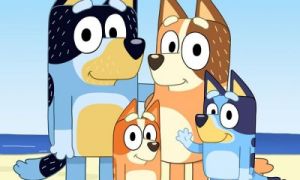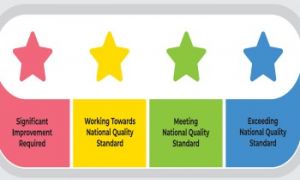Visual learners best process information when it is presented to them in a visual forms like printed words, diagrams, pictures and charts. Such children have a preference for learning by seeing things or observing other people do it. The following provides information on identifying visual child learners, how Educators help visual learners, supporting visual learners and more.
You Can Identify Visual Child Learners By Noticing That They:
- use images, pictures, maps and charts to process information
- are attracted to art and craft materials in different colours
- are often engrossed in drawing and doodling
- are better able to notice minute differences in pictures and objects as compared to their peers.
Educators Can Help Visual Learners By:
- Making use of mind maps, graphic organizers, video clips and posters to teach concepts and skills.
- Maintaining eye contact or bringing their face down to the child’s level when speaking.
- Practicing mirror imaging so that children learn better by imitating the actions and expressions of their teachers
- Color-coding, underlining or using bold fonts to highlight main concepts in written material.
- Using the chalkboard to convey important information
- Teaching them to make lists to remember routines and sequence
- Writing down material on slips of paper and moving them around while teaching words and sentences
- Drawing cartoons or images on cards to teach concepts like a picture of glass of water can be used by learners to indicate that they are thirsty
- Using visual cards and cues to remember routines like hand-washing before lunch and even the steps involved in washing hands properly.
- Choosing storybooks with lots of illustrations, attractive fonts and design
- Letting art and craft activities a time to explore and experiment with colours, shapes and lines
- Writing out flash cards which break down information in small units; these can be a great resource for review of material when they get older.
Supporting Visual Learners:
Since visual children are sensitive to visual stimuli, they may get overwhelmed around excessively bright posters or busy wall displays. Help them sit at relatively uncluttered spaces so that they can focus on their own work. Also when communicating with visual learners, observe visual clues which might tell you whether your message is being received or understood. A “squint” expression on the child’s face should tell you that they are confused about what you are trying to say. To confirm whether the learner has correctly understood you, ask if they ‘see’ what you are saying.
The above strategies will not only help visual child learners meet curricula goals but enable them to communicate more effectively with peers and adults.
Further Reading
Implementing Different Learning Styles When Teaching Children - The following article details each learning style, the set of characteristics which shows how a child may learn and the best way to teach a child based on their own individual learning style.
References:
How To Accommodate Different Learning Styles, UMAss Dartmouth University
Strategies To Aid Visual Learners, Starlit Services



 As an Educator in Australia, your pay rate falls under the Children’s Services Award 2010. This award states the minimum amount that an employer can
As an Educator in Australia, your pay rate falls under the Children’s Services Award 2010. This award states the minimum amount that an employer can When working as a qualified Early Childhood Teacher (with a university degree) within a service, your rate of pay will come from the Educational Services
When working as a qualified Early Childhood Teacher (with a university degree) within a service, your rate of pay will come from the Educational Services When working as a Diploma Qualified Educator your pay rate is from the Children's Services Award 2010. This Award states your minimum rate of pay
When working as a Diploma Qualified Educator your pay rate is from the Children's Services Award 2010. This Award states your minimum rate of pay When working as a Cert 3 Qualified Educator, your pay rate is from the Children's Services Award 2010. This Award states your minimum rate of
When working as a Cert 3 Qualified Educator, your pay rate is from the Children's Services Award 2010. This Award states your minimum rate of Educational Leaders play a crucial role in their early childhood service by ensuring that the educational program aligns with best practices and supports the holistic
Educational Leaders play a crucial role in their early childhood service by ensuring that the educational program aligns with best practices and supports the holistic In early childhood education and care, ratios are more than a technicality—they are a frontline safeguard. Every child deserves responsive supervision, emotional connection, and developmental
In early childhood education and care, ratios are more than a technicality—they are a frontline safeguard. Every child deserves responsive supervision, emotional connection, and developmental With the new national child safety reforms kicking in on 1 September 2025, early childhood services like yours have a real opportunity to lead the
With the new national child safety reforms kicking in on 1 September 2025, early childhood services like yours have a real opportunity to lead the Here’s a comprehensive Mobile Phone and Smart Watch Policy tailored for early childhood education and care (ECEC) services in Australia, aligned with the latest 2025
Here’s a comprehensive Mobile Phone and Smart Watch Policy tailored for early childhood education and care (ECEC) services in Australia, aligned with the latest 2025 The Sea of Fish Challenge is a national initiative that invites children, educators, families, and communities to create and display fish artworks as a symbol
The Sea of Fish Challenge is a national initiative that invites children, educators, families, and communities to create and display fish artworks as a symbol Across the early childhood education and care sector, educators are sounding the alarm: current staffing ratios are insufficient to deliver safe, meaningful, and developmentally appropriate
Across the early childhood education and care sector, educators are sounding the alarm: current staffing ratios are insufficient to deliver safe, meaningful, and developmentally appropriate


